- Home
- Raymond Chandler
The Annotated Big Sleep Page 2
The Annotated Big Sleep Read online
Page 2
Aerial view of downtown Los Angeles, 1930s (University of Southern California Libraries and California Historical Society)
After arriving in Los Angeles, Chandler worked first as a bookkeeper and then as an executive for the Dabney Oil Syndicate. There he witnessed some of the corruption endemic to the oil industry and the justice system. The whole time, he saw his adopted hometown through the eyes of an outsider. In 1950 he would reflect, “I arrived in California with a beautiful wardrobe, a public school accent, no practical gifts for earning a living, and a contempt for the natives that, I am sorry to say, persists to this day.”
Ironically, Chandler was a successful executive in the oil industry as the Depression hit in 1929 and deepened in the following years. When he was sacked by Dabney Oil in 1931, it wasn’t because of the wider economic collapse, nor because he was “intrigued” out of the job, as he later averred, but because of unacceptable behavior and too many lost weekends. (See note 13 on this page regarding Marlowe’s firing.) Finding himself out of work at the age of forty-three, two years into the Great Depression, Chandler seemed to be in for hard times.6
Chandler took it as an opportunity to do “what I had always wanted to do—write.” But he had to find a way to make it pay. He later recalled, “In 1931 my wife and I used to cruise up and down the Pacific Coast in a very leisurely way, and at night, just to have something to read, I would pick a pulp magazine off the rack. It suddenly struck me that I might be able to write this stuff and get paid while I was learning.” He never underestimated his chosen task. After the publication of his first story in December 1933 he wrote to friend William Lever, “It took me a year to write my first story. I had to go back to the beginning and learn to write all over again.”
The pulp magazines (so called because they were printed cheaply, on wood-pulp paper) were ubiquitous at newsstands, bus stations, and drugstores. They were a cheap, gaudy source of popular entertainment that sometimes mixed in subversive social commentary with tales of adventure and derring-do. The format, invented in 1882 as a vehicle for children’s adventure stories, was tremendously popular when Chandler was growing up. By the 1920s there were pulps specializing in each popular subgenre: detective stories, Westerns, love stories, adventure stories, sea stories, stories of the occult, and so on. During the Depression these sources of cheap entertainment provided vital escape for the downtrodden and disenfranchised.7
Black Mask was widely regarded as the best of the bunch. It was founded in 1920 by drama critic and editor George Nathan and journalist, culture maven, and scholar H. L. Mencken as a way to fund their tonier magazine, The Smart Set. Its early subtitle announced “Western, Detective, and Adventure Stories,” but due to popular demand, the crime stories—and specifically the newly invented “hard-boiled” detective fiction—took over.
Hard-boiled fiction hit the world hard in the 1920s, and in some ways it really was the revolutionary force Chandler claimed it was. Edgar Allan Poe generally receives the credit for inventing detective fiction (which he called “tales of ratiocination,” meaning, generally, stories of logical deduction) in three short stories in the 1840s starring the eccentric genius C. Auguste Dupin. Arthur Conan Doyle followed Poe’s lead when he invented his own brilliantly eccentric hero named Sherlock Holmes in 1887. By the end of the 1920s, a distinct tradition had grown up behind Poe and Doyle, giving us genteel amateurs like Agatha Christie’s Hercule Poirot and Miss Marple, Dorothy Sayers’s Lord Peter Wimsey, and the estimable Ellery Queen. The stories were often “puzzle mysteries” or “whodunits” where the reader played along with the detective to interpret the clues and solve the mystery. One of these authors, S. S. Van Dine (the pseudonym of American art critic Willard Huntington Wright), even published the rules for this type of literary game in his 1928 essay “Twenty Rules for Writing Detective Stories.” (Rule number one: “The reader must have equal opportunity with the detective for solving the mystery. All clues must be plainly stated and described.” Just try this with The Big Sleep!)
This is now considered the Golden Age of detective fiction. Chandler and his fellow hard-boiled practitioners roundly rejected this legacy.8 When Chandler has Philip Marlowe trenchantly declare that “I’m not Sherlock Holmes or [Van Dine’s] Philo Vance” in Chapter Thirty of The Big Sleep, he’s making a statement as much about the genre that Marlowe is playing in as about the kind of detective Marlowe is. Chandler’s powerful manifestos on behalf of the American hard-boiled rejection of “drawing-room mysteries” can be found in two key essays: his magnificent 1944 “The Simple Art of Murder,” and the introduction to Trouble Is My Business, a quote from which we began our own introduction.
Black Mask and other hard-boiled pulps like Dime Detective and Detective Weekly cut a new path. Carroll John Daly broke in the hard-boiled style with his story “The False Burton Combs” in 1922; his success was enormous, and he was emulated by Black Mask writers throughout the decade. The style bluntly and brutally depicted the corruption and excesses of the 1920s, offering a stylized representation of the organized crime networks spawned by Prohibition. This social context gave rise to a widespread popular demand for crime-related stories in all forms: print, movies, word of mouth, newsreels, gangster films, true-crime journalism, novels, short stories—you name it. As Luc Sante puts it, “the art of lawlessness began a major upward trend all over the world” at this time.9
Hard-boiled, as a subgenre, is infamously “American.” To recall Chandler’s terms: it is the mystery going native.10 Hard-boiled captured the violence of the twenties and the desperation of the thirties in substance, and displayed them formally in a brutal, clipped, but—in the case of Hammett and Chandler, at least—distinctly poetic style. The phrase “hard-boiled” is itself an Americanism.11 According to Brewer’s Dictionary of Phrase and Fable (1989), to be “hard-boiled” is to be “one who is toughened by experience; a person with no illusions or sentimentalities.” In the eloquent words of novelist Walter Mosley, the hard-boiled style is “elegant and concise language used to describe an ugly and possibly irredeemable world,” a style that captivates us “the way a bright and shiny stainless-steel garbage can houses maggots and rats.”12 As Mosley indicates, the world according to hard-boiled is not only tough but also vibrant: a gritty, profoundly urban setting teeming with underworld life—booze, sex, drugs, violence—and the decadence of the wealthy and powerful. Hammett elevated the form in a series of stories in the first half of the twenties, but he truly revolutionized it in his novels Red Harvest, The Dain Curse, and The Maltese Falcon (all first serialized in Black Mask between 1927 and 1929).
Hammett and Black Mask editor Joseph Shaw derived a literary program to lend psychological and linguistic realism, not to mention literary status, to what was considered a very formulaic, “lowbrow” form.13 Toward this end, Hammett mixed hard-boiled with Hemingway—shaken, not stirred.14 For Chandler, as for Hammett, Hemingway was “the greatest living American novelist.”15 Hemingway’s 1926 The Sun Also Rises became the hard-boiled touchstone, with its interior monologue, stark prose, and colloquial turns of phrase. “It is awfully easy to be hard-boiled about everything in the daytime,” protagonist Jake Barnes reflects, “but at night it is another thing.”16 (It’s tempting to consider Hemingway’s characters’ drunken quest for hard-boiled eggs a literary in-joke.)17
In “The Simple Art of Murder,” Chandler establishes the genealogy of the form that he chose to work in. He links Hammett back to Hemingway, but Hemingway back to Theodore Dreiser, Carl Sandburg, and Ring Lardner—the sinewy tradition of the American literary vernacular mixed with social and psychological realism, which itself grew out of the nineteenth-century naturalist movement. The key figures here are Frank Norris, especially for subject matter, and Stephen Crane, for substance and style. Norris wrote on corruption and greed among economic forces in the late nineteenth and early twentieth centuries, and Crane, generally underestimated as one of the influences in t
his context (and one of Hemingway’s greatest early influences), was the author of taut, ironic tales of impending violence.18 In “Simple Art,” Chandler calls this realistic style a “revolutionary debunking of both the language and the material of fiction….You can take it clear back to Walt Whitman if you like,” Chandler says—and probably further back than that, in England anyway, to Wordsworth and Coleridge’s Lyrical Ballads, which famously announced a turn to the “real language of men” in its “Preface”/manifesto of 1800. “It probably started in poetry,” Chandler says coyly; “almost everything does.”
If, for Hammett, the most important work was The Sun Also Rises, then for Chandler it was Hammett’s The Maltese Falcon (1930). Yet for all their similarities—and we will note several places where Chandler overlaps with, and even lifts from, Hammett during the course of TBS—they are profoundly different. Chandler, coming after, can take Hammett’s realism and use of the vernacular à la Hemingway as given. He adds other critical components that make him distinct: a dose of idealism, a strong strain of humor, and a keen self-awareness about the literary game he is playing. Another marked difference is that Hammett belongs to San Francisco while Chandler belongs to Los Angeles. For all their differences, however, Chandler made clear that Hammett paved the way for him. “I give him everything,” he wrote to Blanche Knopf in 1942.
Black Mask writers, 1936: Standing, from left to right, are Raymond J. Moffatt, Raymond Chandler, Herbert Stinson, Dwight Babcock, Eric Taylor, and Dashiell Hammett. Seated, from left to right, are Arthur Barnes, John K. Butler, W. T. Ballard, Horace McCoy, and Norbert Davis. Photograph by Leslie White (Joseph T. Shaw Papers, Department of Special Collections, Charles E. Young Research Library, UCLA)
Chandler became a regular contributor to the pulps beginning in 1933 with a short story called “Blackmailers Don’t Shoot.” “You’ll laugh when I tell you what I write,” he wrote William Lever shortly thereafter. “Me, with my romantic and poetical instincts. I’m writing sensational detective fiction.” He took the form seriously enough himself to thoroughly study and practice the craft of the Black Mask contributors, especially Hammett and Erle Stanley Gardner. He later wrote to Gardner, “I learned to write a novelette on one of yours about a man named Rex Kane….I simply made an extremely detailed synopsis of your story and from that rewrote it and compared what I had with yours, and then went back and rewrote it some more, and so on. It looked pretty good.” His stories were often featured on the lurid covers of Black Mask. They helped Chandler master the form and, crucially, build an audience as a crime writer.
1935 Black Mask cover for Chandler’s “Killer in the Rain,” one of the sources of The Big Sleep (© 2017 Steeger Properties, LLC. All rights reserved.)
By the late 1930s, Chandler was ready to take on the novel form. In writing the full-length work, Chandler undertook an extraordinary series of “cannibalizations” (his term), combining the plots of two of his Black Mask stories, “The Curtain” (1936) and “Killer in the Rain” (1935), adding a couple of scenes from a third, “Finger Man” (1934), and borrowing bits and pieces from other stories along the way. We provide extracts from these early stories so that the reader may see not just how extensively Chandler borrowed from himself but also how carefully he rewrote and what he added (sometimes by subtraction) in the revision process. It’s tempting to compare Chandler’s method with modernist exemplars like T. S. Eliot in his Waste Land and William Burroughs with his notorious cut-ups, but the effect is quite different. Chandler didn’t intend to disorient the reader or to break apart the conventional flow of narrative. Nonetheless, it was a significant way to work if only because it resulted in an emphasis on individual scenes over a seamlessly woven plot. His meticulous revision process shows also in the clipped, taut feel of the novel’s prose. By the time he was done, TBS was painstakingly polished, sleek, and streamlined. “I am a fellow who writes 30,000 words to turn in five,” he wrote in 1944. He had also invented a new name and provided a fuller psyche for his central character, who had had various names before (Mallory, Carmady, Dalmas) but now for the first time went by the name Philip Marlowe.
The original cloth-bound novel sold about ten thousand copies for Knopf, in two print runs of five thousand apiece. Though this did not make it a bestseller, it did outpace the average mystery novel, which sold about three thousand copies in cloth. Reviews were generally favorable, but most were of the “roundup” type, paired with other new mystery releases in a single review.19 Chandler, writing to Alfred A. Knopf, remarked that “I have seen four notices, but two of them seemed more occupied with the depravity and unpleasantness of the book than with anything else.” Despite commercial success, Chandler declared himself “deflated” by the lack of serious attention. The Cleveland Plain Dealer, for example, published the kind of review that Chandler hated, noting the high points and asking, “What more do you want for your two bucks?”20 After the second cloth edition, Grosset & Dunlap brought out a discounted edition that sold another 3,500 copies. The first paperback edition was brought out by Avon Books in 1943. It quickly sold 300,000 copies and helped to turn Chandler’s fortunes around.21
In the same year as the Avon pocket book smash, Chandler went to work with Billy Wilder on the screenplay to James M. Cain’s Double Indemnity. After it was released by Paramount Studios the following year, it was nominated for seven Academy Awards, including Best Screenplay. Chandler later derided the experience (“It was an agonizing experience and has probably shortened my life”), but it cemented his demand in Hollywood. By the time of the Howard Hawks filmed version of TBS in 1946, Chandler was an established name in Hollywood and in mystery novel circles. But he never shook the feeling that his true literary potential had gone unfulfilled. A few years before his death in 1959, Chandler sighed, in an interview with the London Times, “I’m not going to write the great American novel.” We think he already had.
1. See Mark Girouard, The Return to Camelot: Chivalry and the English Gentleman (1981), for an extended consideration of the Victorian revival of idealized medieval romantic culture, which the Edwardian period inherited. Most of Chandler’s writing from this period participates in the revival. See especially his telling essay “Realism vs. Fairyland,” in which he defends idealism against the demands of realism. Also see his article on “The Genteel Artist” and his poems “The Quest” and “The King.” All can be found in Matthew J. Bruccoli’s collection, Chandler Before Marlowe: Raymond Chandler’s Early Prose and Poetry, 1908–1912 (1973), and in the “Chandler Before the Pulps” chapter of Raymond Chandler: A Literary Reference, edited by Robert F. Moss (2003).
2. Virginia Woolf, A Room of One’s Own (1989), 15.
3. See Richard Rayner, A Bright and Guilty Place: Murder, Corruption, and L.A.’s Scandalous Coming of Age (2010). The ensuing Rayner quotation can be found on page 33.
4. Carey McWilliams, Southern California: An Island on the Land (1973), 239.
5. Mike Davis, City of Quartz: Excavating the Future in Los Angeles (1992), chapter 1, “Sunshine or Noir?”
6. See Tom Williams, A Mysterious Something in the Light: Raymond Chandler: A Life (2012). Biographers differ on the date of Chandler’s firing; we have gone with Chandler’s own account in an unpublished August 1933 letter in which he dates it at “two years ago last June.”
7. See Sean McCann, Gumshoe America: Hard-Boiled Crime Fiction and the Rise and Fall of New Deal Liberalism (2000); Erin A. Smith, Hard-Boiled: Working-Class Readers and Pulp Magazines (2000); and Victor E. Neuberg, “Pulp Magazines,” in The Popular Press Companion to Popular Literature (1983). Frank MacShane’s The Life of Raymond Chandler (1976) gives a good overview on pages 44–45.
8. There was another legacy, however, probably “beneath” Chandler’s consideration: the rambunctious history of nineteenth- and early-twentieth-century crime fiction presented in sensational yellow-backs, penny dreadfuls, shilling shockers, and
dime novels featuring all manner of characters drawn from “lowlifes” in the cities, outlaws and heroes on the frontier—even pirates. It should be noted that women writers such as Mary Elizabeth Braddon figured prominently among the authors of popular dime novels, and female detectives such as Denver Doll and the cross-dressing New York Nell, “the boy-girl detective,” featured as the leads of serials written by men and women alike. For a lavishly illustrated tour through this spectacular history, see Peter Haining’s The Golden Age of Crime Fiction (2002). The first three chapters of Haining’s magnificent book plunge the reader into this bygone era, before the arrival of Sherlock Holmes. See also Lee Server’s sumptuous Danger Is My Business: An Illustrated History of the Fabulous Pulp Magazines, 1896–1953 (1993). For the illustrated history of the penny dreadfuls specifically, see Michael Anglo’s fun Penny Dreadfuls and Other Victorian Horrors (1977). These titles reproduce for the modern reader the exciting, but now lost, popular market in much-needed historical context.
9. Luc Sante, “Soul Inspector,” Bookforum, June/July/August 2007, http://www.bookforum.com/inprint/014_02/241.
10. See Marcus Klein, Easterns, Westerns, and Private Eyes: American Matters, 1870–1900 (1994), on the distinctively American quality of the hard-boiled genre, in line with Westerns and the Horatio Alger stories.
11. See the paper trail given in H. L. Mencken’s three American Language volumes: page 561 in vol. 1 of the Fourth Edition (1936); pages 409 and 445 in Supplement One (1945); and pages 647–648 in Supplement Two (1948).
12. Walter Mosley, “Poisonville,” in A New Literary History of America (2009), 599.
13. See MacShane, Life, 45–46, on the project. Chandler dedicated a collection of stories to Shaw thus: “For Joseph Thompson Shaw with affection and respect, and in memory of the time when we were trying to get murder away from the upper classes, the weekend house party and the vicar’s rose-garden, and back to the people who are really good at it.”

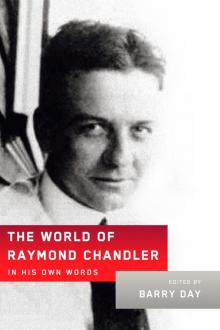 The World of Raymond Chandler: In His Own Words
The World of Raymond Chandler: In His Own Words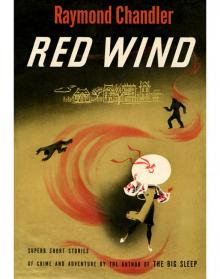 Red Wind: A Collection of Short Stories
Red Wind: A Collection of Short Stories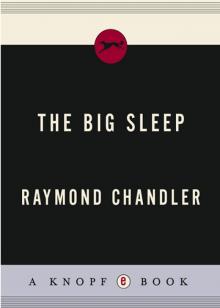 The Big Sleep
The Big Sleep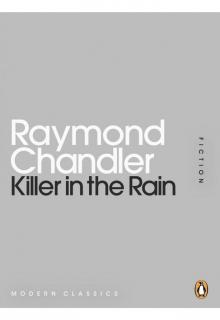 Killer in the Rain
Killer in the Rain Playback
Playback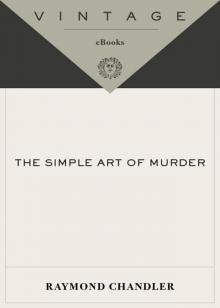 The Simple Art of Murder
The Simple Art of Murder The Bronze Door
The Bronze Door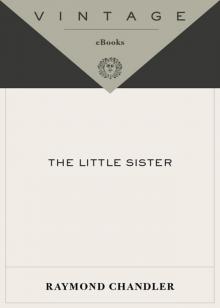 The Little Sister
The Little Sister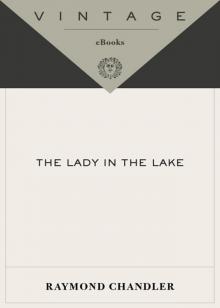 The Lady in the Lake
The Lady in the Lake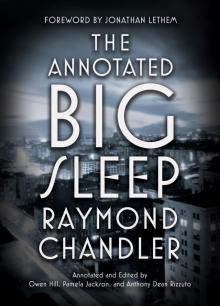 The Annotated Big Sleep
The Annotated Big Sleep The Collected Raymond Chandler
The Collected Raymond Chandler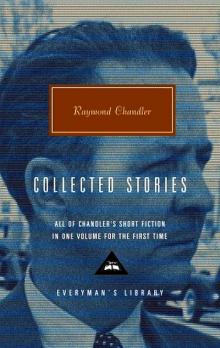 Collected Stories (Everyman's Library)
Collected Stories (Everyman's Library)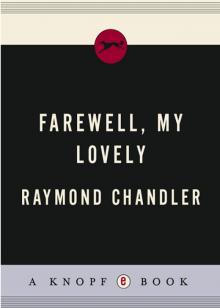 Farewell, My Lovely
Farewell, My Lovely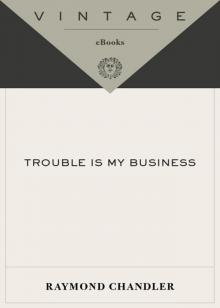 Trouble Is My Business
Trouble Is My Business The Long Goodbye
The Long Goodbye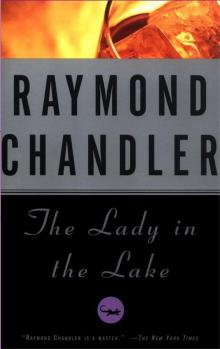 The Lady in the Lake pm-4
The Lady in the Lake pm-4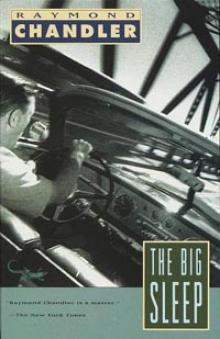 The Big Sleep pm-1
The Big Sleep pm-1 The World of Raymond Chandler
The World of Raymond Chandler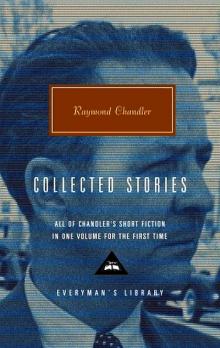 Collected Stories of Raymond Chandler
Collected Stories of Raymond Chandler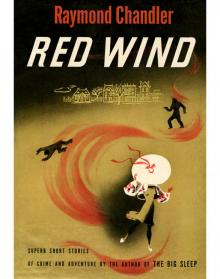 Red Wind
Red Wind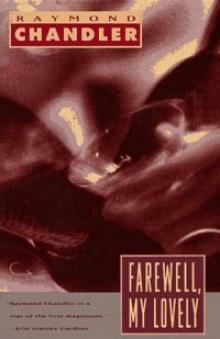 Farewell, My Lovely pm-2
Farewell, My Lovely pm-2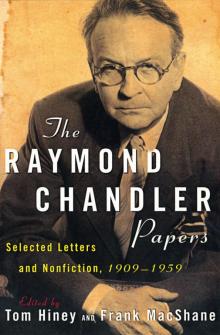 The Raymond Chandler Papers: Selected Letters and Nonfiction, 1909–1959
The Raymond Chandler Papers: Selected Letters and Nonfiction, 1909–1959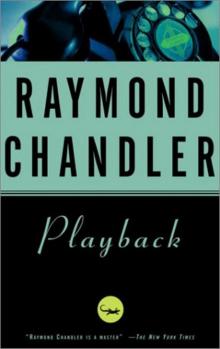 Playback pm-7
Playback pm-7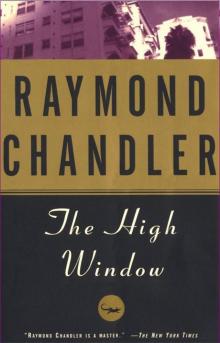 The High Window pm-3
The High Window pm-3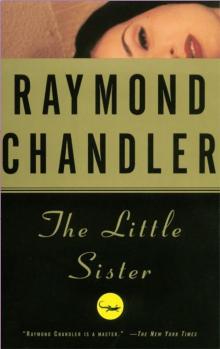 The Little Sister pm-5
The Little Sister pm-5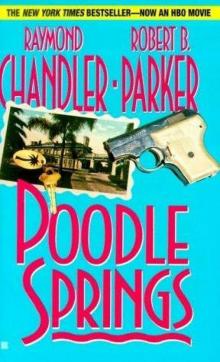 Poodle Springs (philip marlowe)
Poodle Springs (philip marlowe)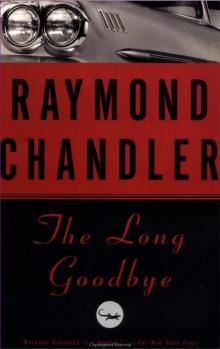 The Long Goodbye pm-6
The Long Goodbye pm-6